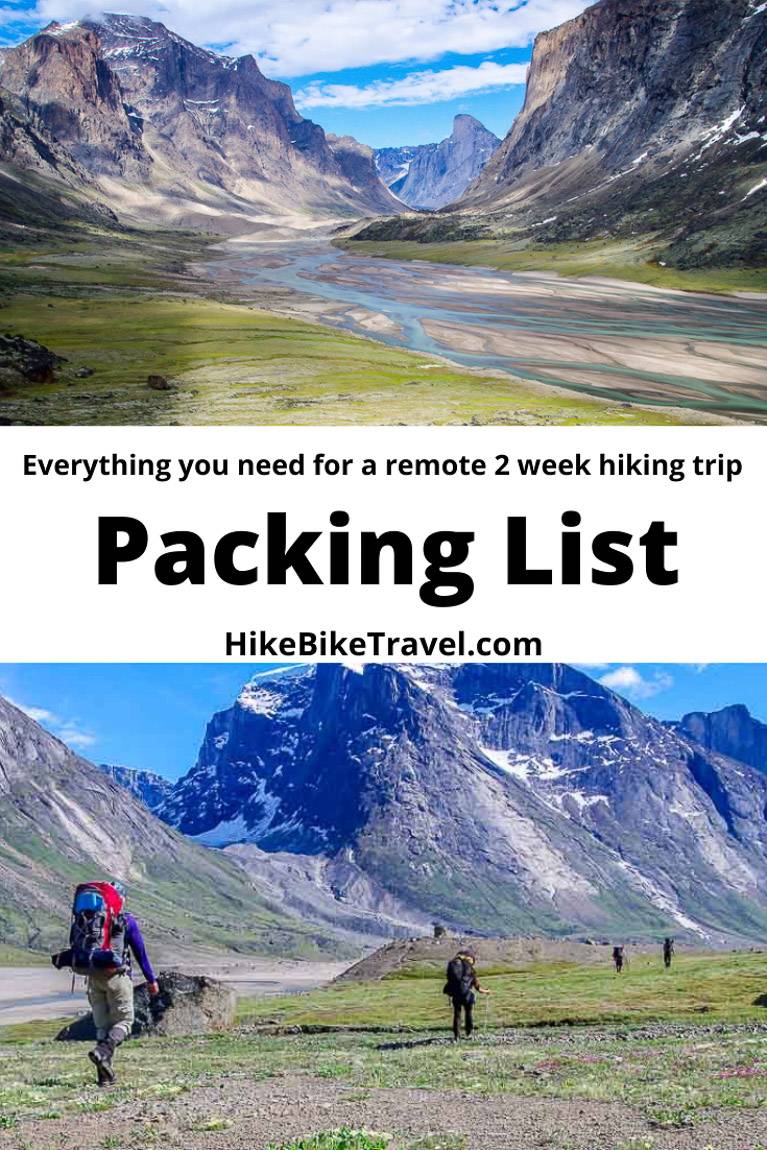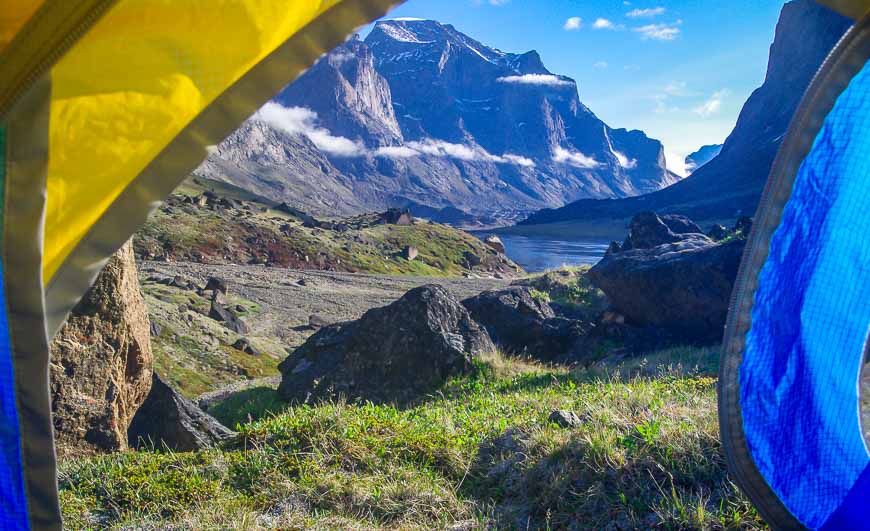I visited Auyuittuq National Park on Baffin Island’s Cumberland Peninsula at the end of June one year. Auyuittuq is an Inuktitut word meaning land that never melts. I don’t normally do adventure tours anymore figuring I have enough experience to do it on my own. But when a trip is remote and logistics are tough, I am happy to leave the planning – especially meal planning to an outfit. But still packing was an issue. Below is a packing list for a remote two week backpacking trip – with a few suggestions I learned from experience after the two week trip.
If you’re going on a shorter hiking trip, modify the packing list primarily by reducing the amount of clothing (and of course food) you take. The gear doesn’t change much.
Pack weight is really everything. If ones’ pack is too heavy it totally takes away from the enjoyment of the trip. And we are carrying everything from food to fuel to all our personal gear. It weighed a lot!
This post includes some affiliate links. If you make a purchase via one of these links, I will receive a small commission at no extra cost to you. Thank you very much for your support.
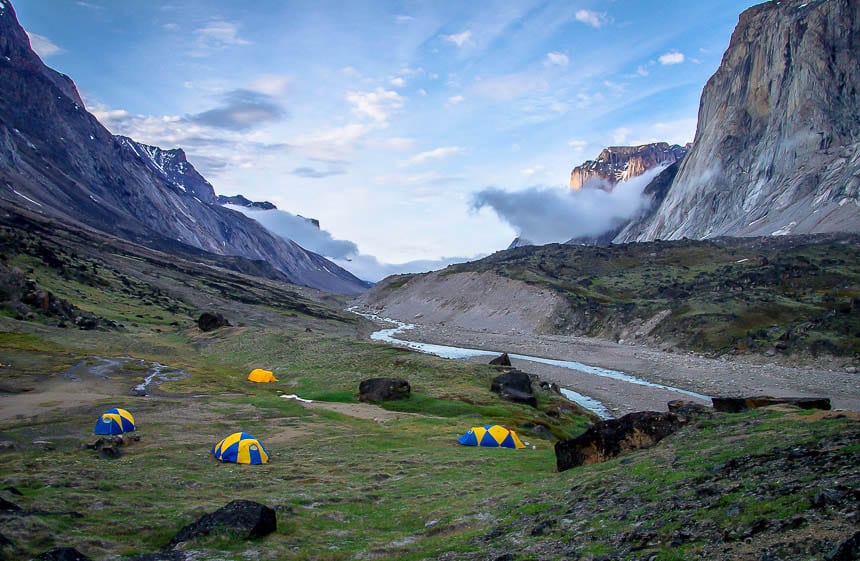
Here’s what a packing list looks like for a remote two week trip – where it’s more likely to be cold and windy than hot.
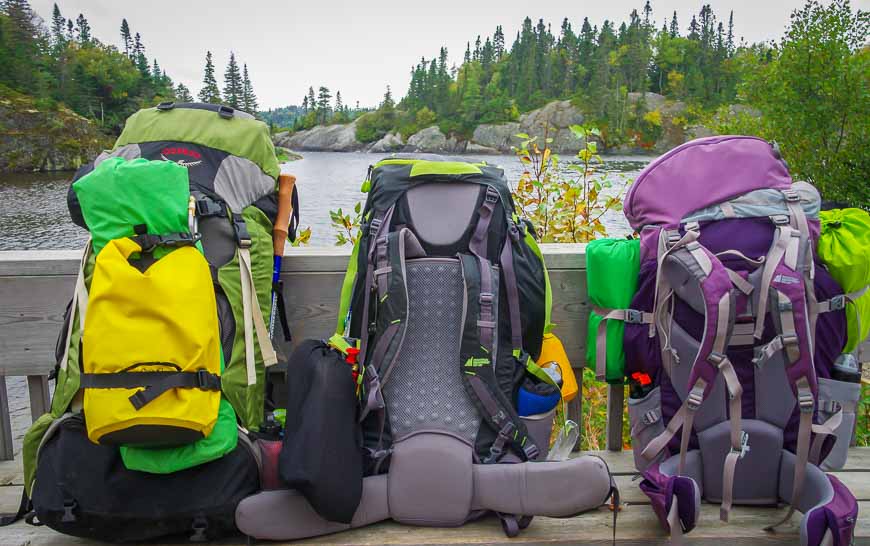
Equipment for a remote backpacking trip
- One good quality pack with rain cover – 70+ liters for men, 60+ liters for women
- A sleeping bag rated to -5°C or colder, down or synthetic
- A sleeping pad
- Hiking poles – they will come in handy for balance fording streams and they do help take the weight off your knees. Go for the collapsible versions.
- One – 1 litre water bottle, a water filter and water purification tablets.
- Insect repellent and bug jacket
- Toiletries including sunscreen as it will be nearly 24 hour sunlight, lip salve, biodegradable soap, matches, blister care kit ( I swear by Compeed)
- Pack towel
- Camera. I have a Nikon Z6. I’ve decided to bring two lenses – an 18-200 mm and a wide angle, plus two spare batteries and several extra cards.
- Binoculars and a bird book. My husband will carry these.
- Small foam bum pad for sitting – literally used this every day.
- Pen, paper, journal
- Kindle, book(s)
- Swiss Army knife
- Two dry bags for clothes and sleeping bag
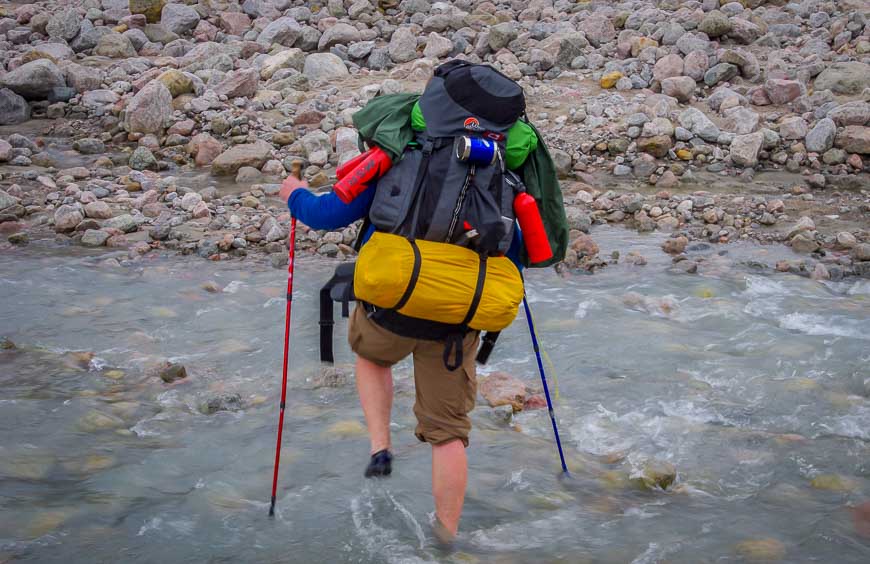
Packing list for clothing on a remote 2 week trip
Layering is key to hiking in the Arctic or anywhere where it can be cold and windy (Patagonia, the Rockies…)- especially when the winds are blowing – which from what I’ve read is pretty constant at 10-20 km/hour. At least it will keep the bugs away. Snow can happen at any time and generally we can expect cool temperatures.
- One pair of mid-weight hiking boots
- One pair of neoprene socks
- One pair of lightweight (think Crocs) camp shoes
- Two pairs of thicker socks
- One pair of warm gloves
- One ball cap AND a warm hat
- A hood on a raincoat or a rain hat
- Sunglasses with a strap
- One light weight synthetic undershirt
- One mid-weight quick dry long-sleeved crewneck shirt
- One expedition weight zip neck top
- One lightweight down vest
- One down jacket or sweater in stuff sack (with hood)
- One Gore-Tex jacket or waterproof jacket
- A few pairs of underwear
- One pair mid-weight long underwear
- One pair expedition weight long underwear (W)
- One pair stretch ski tights
- One pair of Gore-tex pants
- One pair of gaiters
- One fleece neck tube
- One pair of orthotics
- One pair of synthetic shorts
UPDATE: I took an inflatable seat cushion that took up almost no room. I highly recommend that as it keeps your butt warm and dry – and it’s far more comfortable than sitting on a rock.
I think only a high quality Gore-Tex jacket is all you need. I brought wind pants but my Gore-Tex pants were just fine – so I would save weight and volume and nix the wind pants too.
Food
On a two week trip without a resupply, plan on drying your own food or bring dehydrated food. It takes up a lot of volume. You don’t want leftovers either as you need to pack them out. That will be the subject of another blog.
Anything you’d add to the list for a two week backpacking trip?
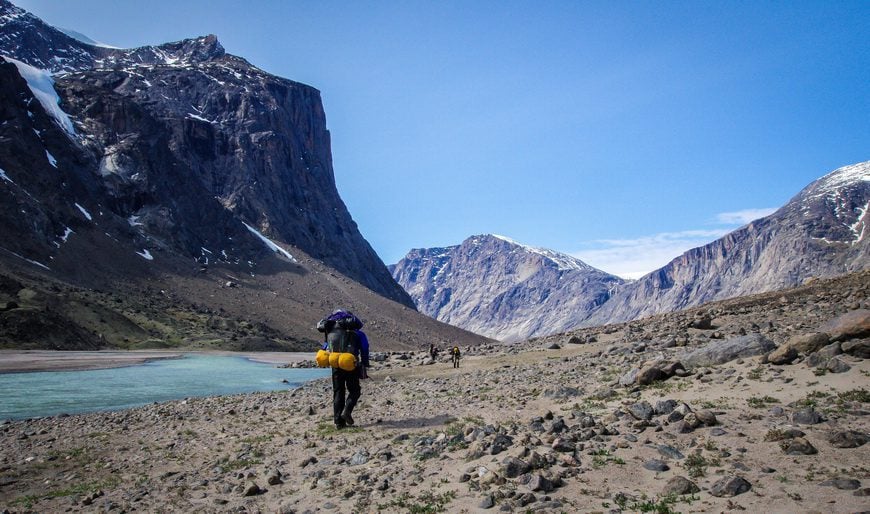
Further reading on backpacking trips
- Baffin Island Backpacking in Auyuittuq National Park
- Hiking the Coastal Trail in Pukaskwa National Park, Ontario
- Hiking the Skyline Trail in Jasper National Park
- Backpacking the Long Range Traverse – Day 1
- 10 of the Most Scenic Backpacking Trips in Canada
Click on the photo to bookmark to your Pinterest boards.
